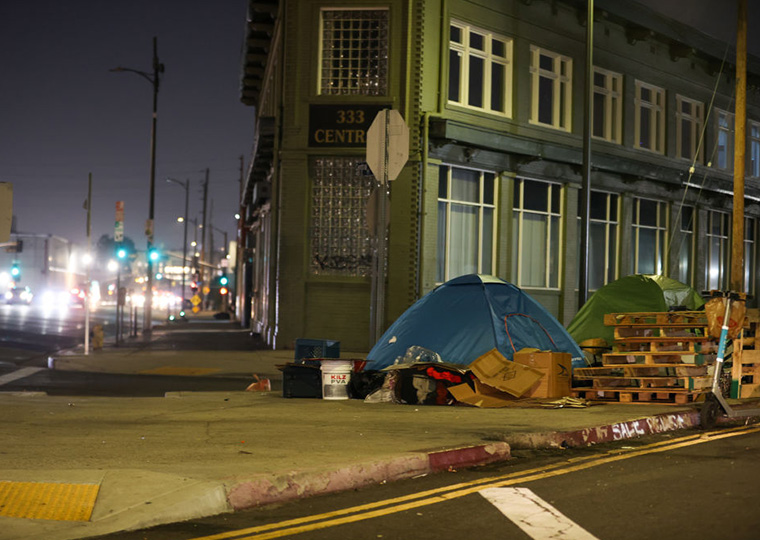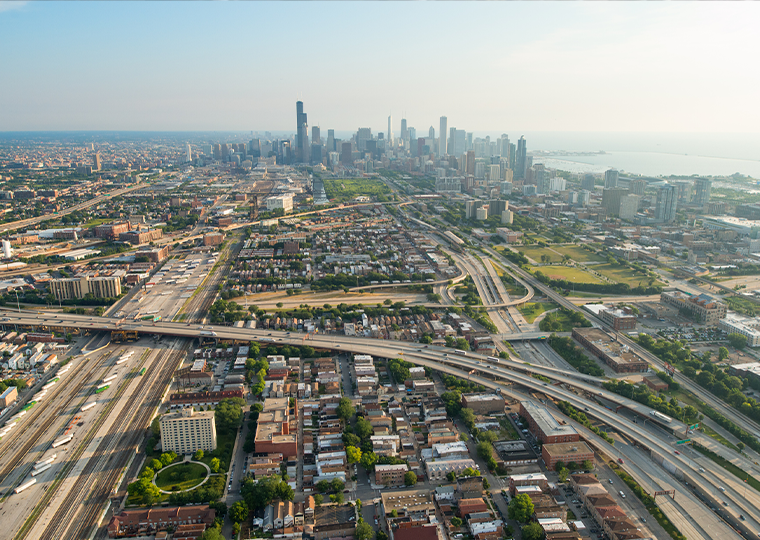Payouts to victims of Colombia’s decadeslong armed conflict suggest benefits may exceed the initial cost
The May 2020 murder of George Floyd that catalyzed a new chapter of national reckoning on racial discrimination also brought renewed focus to the case for reparations for African Americans.
So far, the prospect of financial reparations for victims of racial discrimination remains in the study phase among a smattering of states and cities, but there is no forward motion in Congress.
One notable exception is Evanston, Illinois, which in 2022 began issuing $25,000 payments to African American residents who were victims (or direct descendants of victims) of the city’s racially discriminatory housing policies between 1919-1969. Initial beneficiaries were restricted to using the money for housing-related costs (a mortgage, paying down a mortgage or home repairs). Evanston’s City Council recently announced future payments would be made with no strings attached.
Opt In to the Review Monthly Email Update.
Among potential large-scale state initiatives, California has advanced the ball furthest to date. The California Reparations Task Force delivered its final report to the state Legislature in June 2023. Among its recommendations are payments that could amount to hundreds of thousands of dollars for longtime residents who can prove they are a descendant of an enslaved African American, or a free African American who was in the country before 1900.
That’s only a recommendation, and it comes at a rough fiscal juncture for the state, which recently had to close a $32 billion budget deficit. To many, of course, reparations are simply a way to address past wrongs. A bill long past due. But as more government entities consider financial reparations to address the socioeconomic toll of racial discrimination, proponents and opponents alike will want to gauge the impact of such payments.
Examining Post-Payout Life
A working paper, looking at financial reparations being made to more than 7 million victims of Colombia’s violent decadeslong conflict between rebels, paramilitary groups and government forces, provides an intriguing glimpse into the potential transformative nature of reparations.
An analysis of socioeconomic measures including homeownership rates, health status, wages and the educational path of school-age children found that recipients of a lump sum reparations payment had sizable gains in well-being three and four years after receiving the payment.
The Research Group at World Bank’s Arlen Guarin, UCLA’s Juliana Londoño-Vélez and Banco de la República de Colombia’s Christian Posso also worked through a “back of the envelope” cost-benefit analysis that they intentionally rigged to use conservative assumptions. They calculate that the upfront cash cost of the payments was recovered four years later as a result of improved health among recipients, which translates into lower health care spending by the state (Colombia has universal health care), and the economic boost from the fact that the children of recipients were more likely to continue on to college.
“Reparations significantly improve people’s health outcomes and benefit children’s human capital,” they write. “Further, these effects will likely continue paying off in the long run.”
Colombia’s initial reparations program launched in 2008 but proved too cumbersome and had a narrow definition of who qualified as a victim. In 2011 a more expansive program was enacted that pairs financial reparations with other internationally recognized steps considered central to successful peace building and recovery. Guarin, Londoño-Vélez and Posso focus solely on an analysis of the financial payouts to the more than 7 million living victims in the official government database.
Victims’ individual reparations are based on a formula for the specific human-rights harm done (direct and indirect victims of kidnapping, displacement, disability, sexual abuse etc.). The average lump sum payout of about $10,200 (in 2019 dollars) is the equivalent of more than three years of average wages in Colombia. Budgetary constraints have made for a slow disbursal of payments; about 1% of victims receive a payout each year. A recently passed law requires all reparations to be paid by 2031.
By 2019, more than 800,000 victims in a database created by Guarin, Londoño-Vélez and Posso had received payments. The researchers drilled down on those who received payouts by the end of 2016, which gave them a three-year period of post-payout life to analyze.
Reparations as Economic Catalyst
Guarin, Londoño-Vélez and Posso pulled together data from 10 different government databases, which enabled them to build detailed socioeconomic profiles of each recipient. Among the factors they tracked were employment status, entrepreneurship (paying for a business license), health status and homeownership. For victims with school-age children, they also tracked high school test scores and likelihood of continuing on to a four-year college.
A question among economists studying reparations is whether a large payout could potentially cause recipients to exit the workforce. Tracking this data is tricky in Colombia, where roughly half of workers are outside the formal economy. Still, the researchers found that, three years after a payout, formal employment rates (captured by tax data) were 1.6% lower than pre-payout. But that’s not necessarily a net negative.
The vast majority of victims were in lower income jobs prior to receiving a payout. Guarin, Londoño-Vélez and Posso find that, three years after reparations, there is a 4% decrease in recipients working in high-risk/low-pay jobs and a near 6.5% increase in the likelihood of working in a high-pay/low-risk job. There is also more entrepreneurship as applications for new business licenses rise in the first few years after receiving a payout, and business survival rates improve.
Given that the majority of victims were forced from their homes, the Colombian government includes an explicit suggestion when making payments to recipients that they might want to use the proceeds to buy a home or land. The researchers used data from the second-largest region, Antioquia, as a proxy for the country’s cumulative real estate behavior. They found that three years after a payout, the cumulative real estate purchases among recipients is 40% higher compared with transactions made prior to the payout.
Knock-on Health Effects
Physical well-being also improved. Given Colombia’s universal health care system, the authors are able to granularly track the likelihood of an emergency room visit, hospitalization and the number of procedures for each household receiving reparations. Emergency room visits and hospitalizations decreased by more than 17% four years after a payout. Treatment levels were down nearly 15%. Though beyond the scope of this research, the reasons likely include the shift away from higher-risk jobs and a general reduction in financial stress, which can manifest as physical ailments.
There is also a pay-it-forward story. The researchers were able to track the educational path of school-age children whose family received a payout. Though high-school graduation rates do not change much four years after a payout, the trajectory of those recipients does. Guarin, Londoño-Vélez and Posso report that the likelihood of first-time undergraduate enrollment at four-year colleges increases 24%, and the increase is more pronounced at more expensive private schools.
The researchers’ cost-benefit analysis suggests that it is the savings from reduced health spending (40% of aggregate benefit) and the value of improved human capital from education gains (60%) that drive their estimate that benefits conservatively outweigh the initial reparations cost.
The specifics of Colombia’s reparations — recipients are typically low income; payouts average more than three years of wages; and current victims, not descendants, receive payments — make it impractical to assume the success measured in this project would apply to initiatives with dissimilar attributes, such as those being considered in the United States. But Guarin, Londoño-Vélez and Posso provide valuable insight into one set of conditions in which financial reparations are indeed improving the lives of victims. And that in turn is a foundation for further research on the socioeconomic transformative potential of financial reparations.
Featured Faculty
-
Juliana Londoño-Vélez
Assistant Professor of Economics
About the Research
Guarin, A., Londoño-Vélez, J., Posso, C., (2023). Reparations as Development? Evidence from Victims of the Colombian Armed Conflict.






